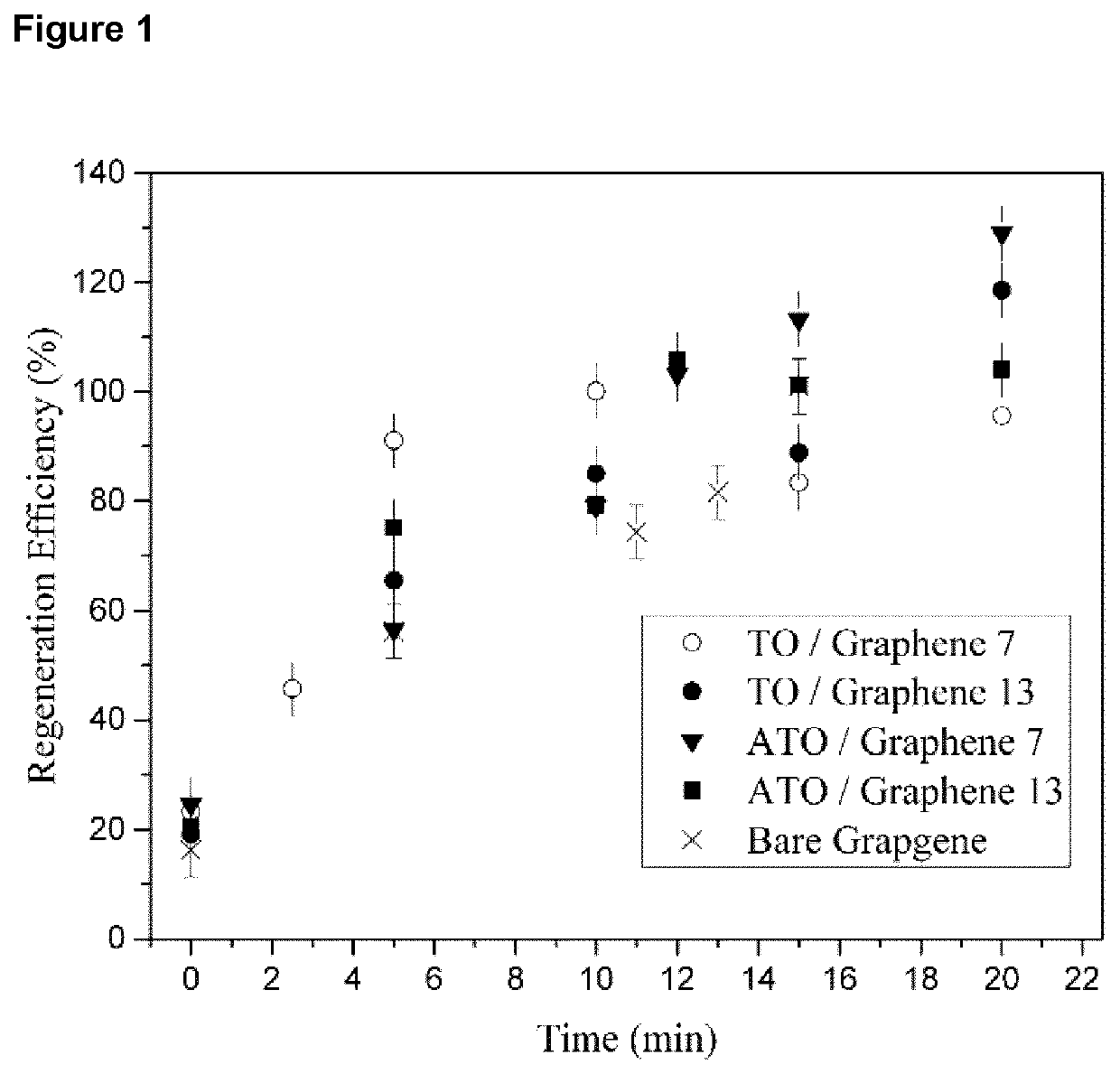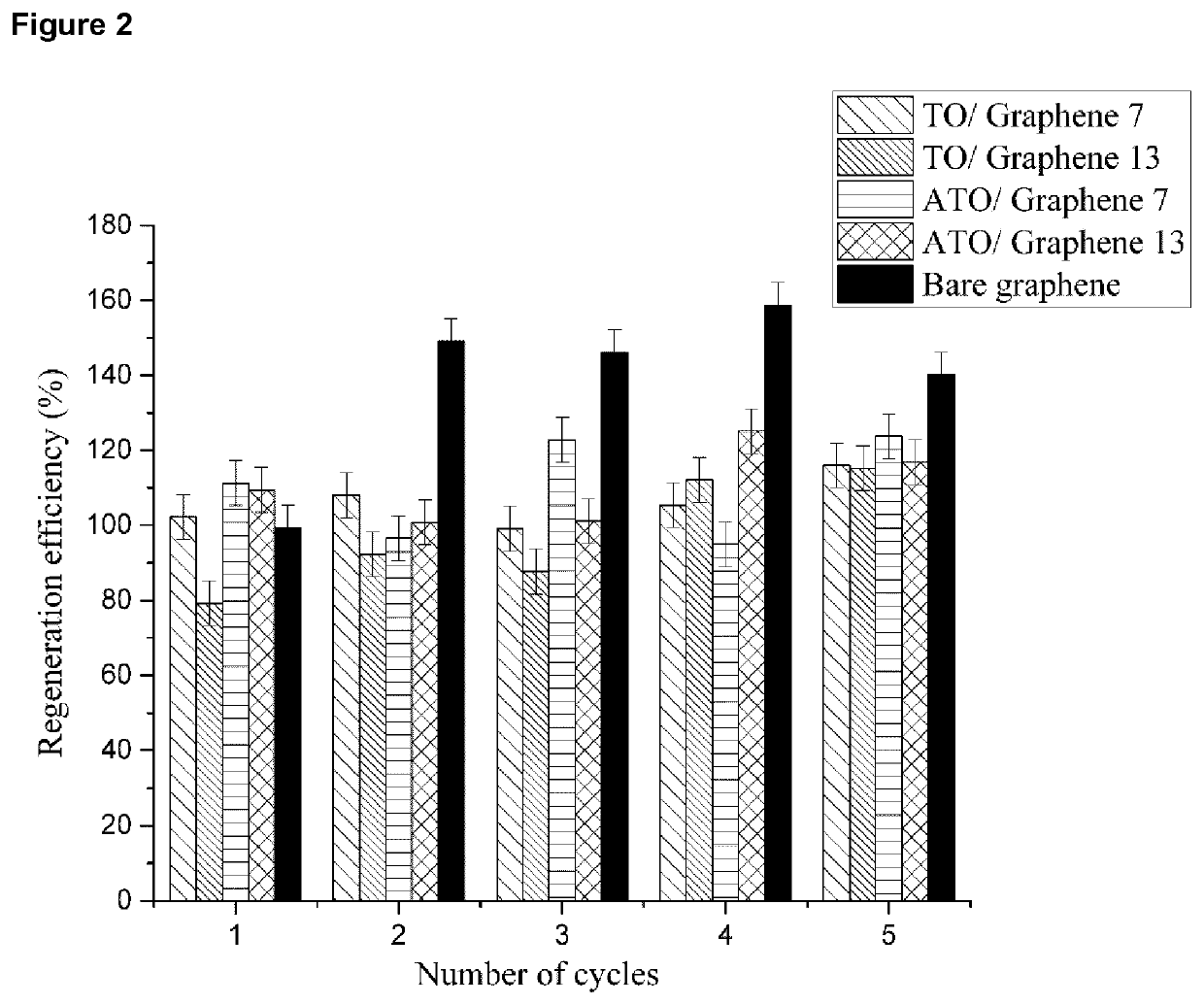Electrochemical adsorbtion with graphene nanocomposites
a graphene nanocomposite and electrochemical technology, applied in the direction of combustible gas purification/modification, other chemical processes, separation processes, etc., can solve the problems of significant corrosion of the adsorbent electrode, graphene may be corroded, etc., and achieve the effect of high surface area and rapid regenerated
- Summary
- Abstract
- Description
- Claims
- Application Information
AI Technical Summary
Benefits of technology
Problems solved by technology
Method used
Image
Examples
Embodiment Construction
[0018]As disclosed herein, tin oxide (TO) and antimony tin oxide (ATO) graphene nanocomposites have been synthesized, characterized and used as adsorbents in adsorption and electrochemical regeneration processes. The nanocomposites are exemplified using alternative TO and ATO loading characteristics: 7 and 13 wt % TO or ATO. Methylene blue (MB) solution is used as a model synthetic wastewater. The advantageous electrochemical regeneration properties of these materials are exemplified, including regeneration time required for 100% regeneration, current efficiency and performance with multiple cycles of adsorption and regeneration. Regeneration was carried out in an electrolytic cell at a constant current of 0.11 A, corresponding to 10 mA per cm2 of adsorbent bed, with a graphite plate anode current feeder and stainless steel cathode. A sodium chloride solution was used as the electrolyte.
[0019]The regeneration efficiency behavior of each adsorbent at the different oxidation times is ...
PUM
| Property | Measurement | Unit |
|---|---|---|
| Thickness | aaaaa | aaaaa |
| Thickness | aaaaa | aaaaa |
| Current density | aaaaa | aaaaa |
Abstract
Description
Claims
Application Information
 Login to View More
Login to View More - R&D
- Intellectual Property
- Life Sciences
- Materials
- Tech Scout
- Unparalleled Data Quality
- Higher Quality Content
- 60% Fewer Hallucinations
Browse by: Latest US Patents, China's latest patents, Technical Efficacy Thesaurus, Application Domain, Technology Topic, Popular Technical Reports.
© 2025 PatSnap. All rights reserved.Legal|Privacy policy|Modern Slavery Act Transparency Statement|Sitemap|About US| Contact US: help@patsnap.com


